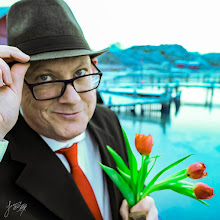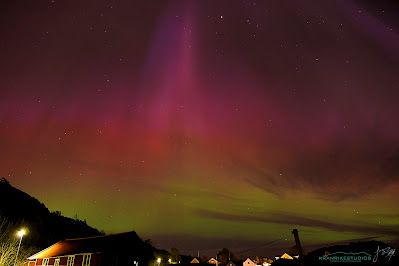Hello Out There!
On April 3, 2004, we shot one of the biggest scenes in Die Zombiejäger, one of Sweden’s first zombie films. About 50 people—actors, extras, and crew—were on set, ready to bring the undead to life.
Planning, Chaos, and a Bullet for Kenneth
We spent over two months prepping a protest scene on Avenyn, right in the heart of Gothenburg. The setup? A crowd of furious demonstrators demanding the return of their loved ones. They were fed up. The police were treating them like criminals. The mayor refused to listen. Tensions were high.


 Then came the breaking point—one of the zombie hunters shot Kenneth, a zombie recognized as someone’s relative.
Then came the breaking point—one of the zombie hunters shot Kenneth, a zombie recognized as someone’s relative.
The crowd erupted. Cans flew. Protesters shoved officers. The police struggled to contain the chaos.
Everything was going exactly as planned.

Zombies, Submachine Guns, and Real Cops
The sun was shining, but the air was ice cold. We had locked down a side street, blocking all traffic, and wrapped the main shoot without a hitch.

Then we decided to squeeze in an extra shot. The idea? A group of police officers patrolling across the street, gunning down zombies.
We crossed over, laid out the undead, and got the cameras rolling.
Enter: real cops.
A patrol car and a riot van suddenly rolled in. Brakes screeched. Doors slammed. Our "police" barely had time to react before actual officers stepped in and shut everything down.
Turns out, residents had called it in. From their windows, all they saw were armed men and a street full of bodies. Given a recent real shooting—where someone had stormed a restaurant with an AK-47—it wasn’t hard to see why they were spooked.
 Explaining the Unexplainable
Explaining the Unexplainable
Our permits were solid, but we still had to convince the police we weren’t committing an actual crime. After a tense few minutes, they believed us—but there was one problem.
No signs.
The officers told us we needed clear "Shoot in Progress" signs on both ends of the street. Some of our demonstrator extras jumped in, handling it like pros. Within minutes, we were back in action, finishing the scene as police officers (the fake ones, this time) shot zombies in the street.


Director Jonas Wolcher on the Hot Seat
The chaos didn’t end there. That evening, director Jonas Wolcher found himself on local radio station P4 Väst, defending the shoot.
The reporter didn’t hold back, grilling him about the missing signs and whether the crew had been irresponsible. Jonas kept his cool, explaining that the signs were now up and that everything was back on track.

Lessons in Guerrilla Filmmaking
By lunchtime, we wrapped. The barricades came down. Traffic rolled back in. The city went on with its day, as if nothing had happened.


But for us, it was a lesson learned.
If you’re filming guerrilla-style—especially with weapons and chaos—expect the unexpected. Always have your permits. Use common sense. And most importantly, be ready to think on your feet.
Because sometimes, your biggest plot twist won’t be in the script.




























